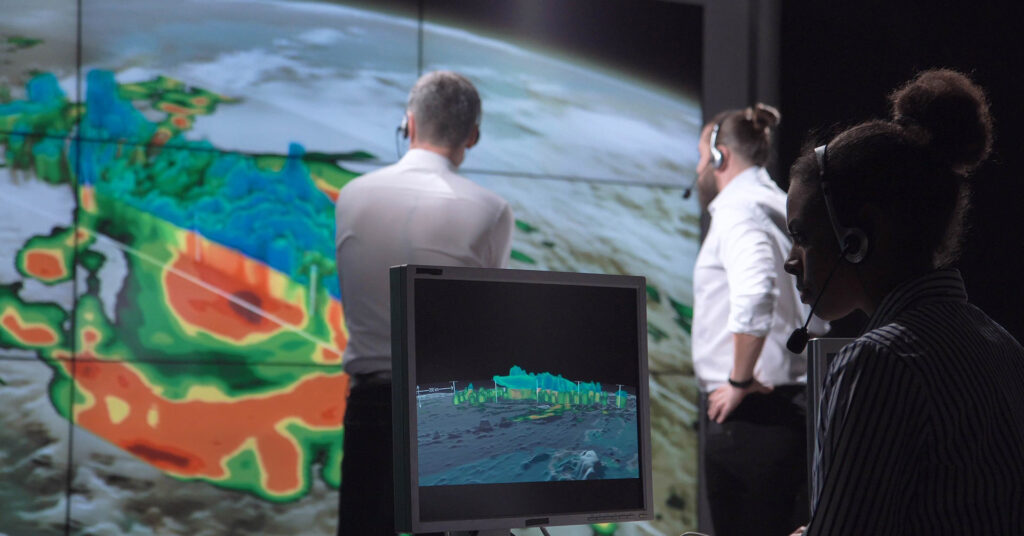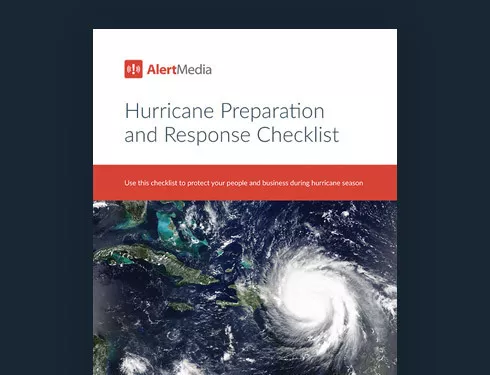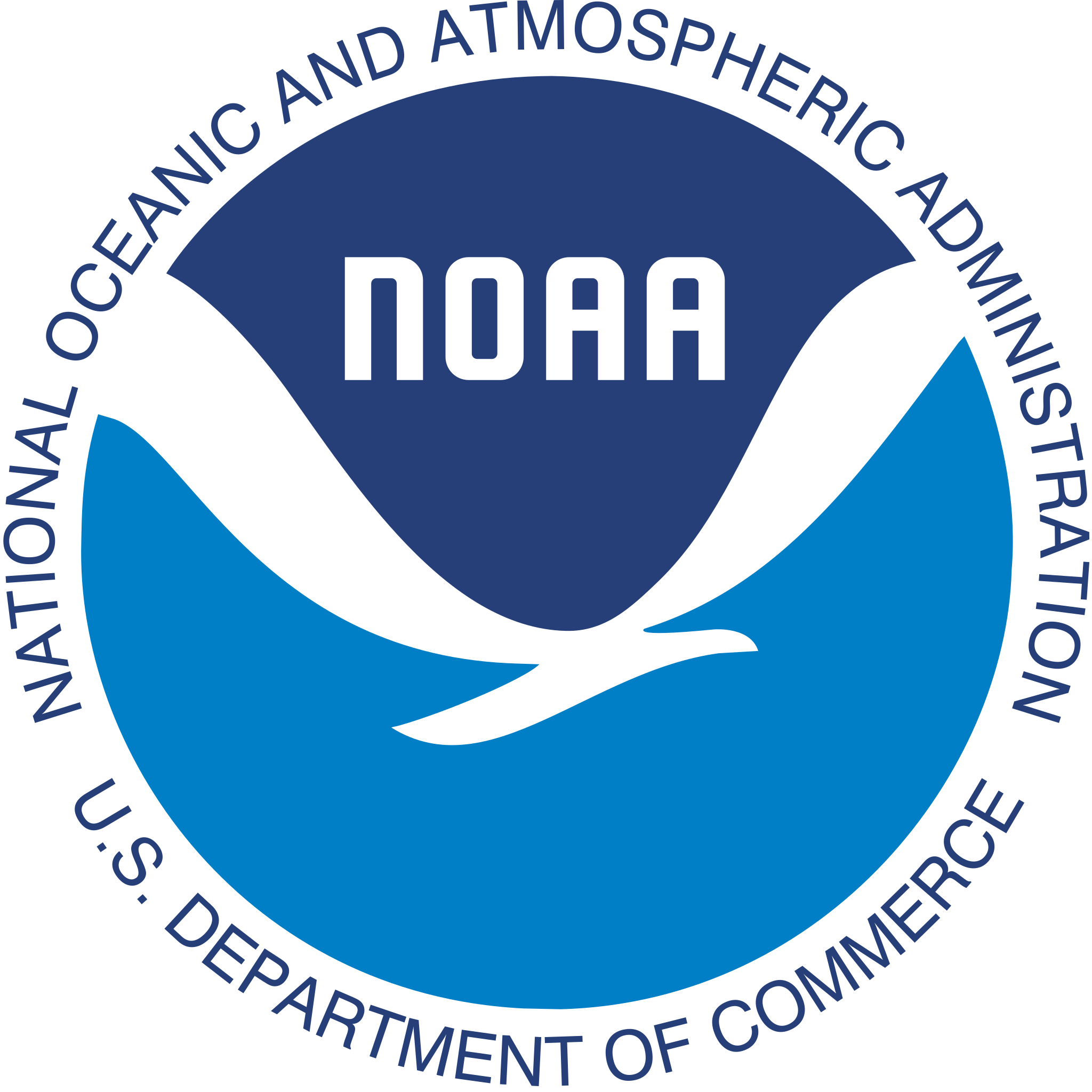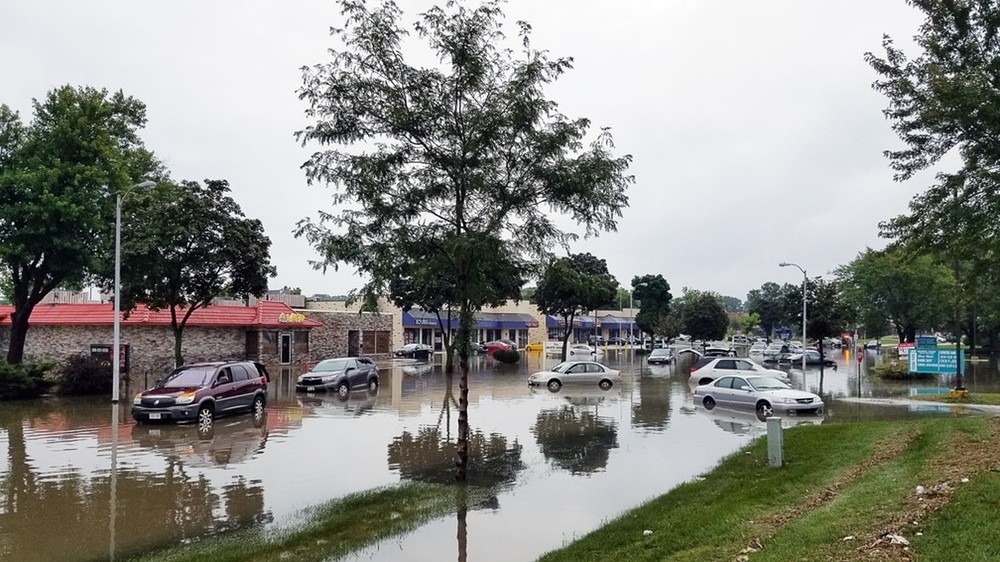
2024 Hurricane Season Predictions: Protect Your Business by Planning Ahead
An above-average hurricane season is approaching this year. AlertMedia’s in-house senior meteorologist, Jason Moreland, breaks down the predictions for this year’s hurricane season and what your organization can do to prepare.

The official forecast is in for the 2024 Atlantic hurricane season, which runs from June 1 through November 30. And this year’s predictions anticipate an above-average season with the shift back to La Niña conditions and warmer-than-average ocean temperatures.
In this post, we take a look at the experts’ hurricane season predictions for 2024 and what it means for your business. Plus, you’ll get to hear from AlertMedia’s in-house meteorologist, Jason Moreland, and learn what your organization can do to prepare for this year’s hurricane season.
What Experts Are Predicting for the 2024 Atlantic Hurricane Season Forecast
Forecasters at Colorado State University (CSU) anticipate an “extremely active” year, with 23 named storms and 11 hurricanes—five of which are expected to develop into severe storms. These predictions closely align with the National Oceanic and Atmospheric Administration’s (NOAA) recent prediction of an above-average season with 17–25 named storms, 8–13 hurricanes, and four to seven major storms.
CSU is also forecasting a season total accumulated cyclone energy of 210 units versus the 30-year average of 123 units.

What is an “average” hurricane season?
“After three hurricane seasons with La Niña present, NOAA scientists predict a high potential for El Niño to develop this summer, which can suppress Atlantic hurricane activity.”National Oceanic and Atmospheric Administration
Prior to 2021, meteorologists used hurricane data from 1981 to 2010 for its 30-year average, which served as a baseline for expected activity during a given hurricane season. The previous averages anticipated 12 named storms, six hurricanes, and three major hurricanes during an “average” hurricane season.
However, since 2021, the new average hurricane season has been defined using data from a more recent 30-year period spanning 1991 to 2020. This new data anticipates 14 named storms; seven of those named storms becoming hurricanes; and of those seven hurricanes, three becoming major hurricanes. So, you can see the increase in what is considered a “normal” hurricane season.
A Meteorologist’s Perspective: Interview With Jason Moreland
We sat down with Jason Moreland, Senior Meteorologist at AlertMedia, to get his thoughts on the upcoming season and the best way businesses can prepare before the storms start brewing.
This early in the season, what can meteorologists determine about expected hurricane paths and landfall?
While long-range climate patterns can give us a general idea of the total number of named systems and hurricanes we may see, there is no reliable way to determine storm paths months ahead.
It’s also important to note that there have been plenty of active seasons that feature large numbers of storms that remain well out at sea. On the other hand, calmer seasons, at least in terms of total storm numbers, can still be destructive if one or two strong hurricanes sneak across the Atlantic Ocean and the Caribbean Sea.
What stands out in this year’s hurricane outlook?
Two primary drivers behind the hyperactive forecast are the expectation of La Niña formation by the summer, and record-setting warm water temperatures that have been observed across the Atlantic as of late. In the Pacific, El Niño conditions are rapidly dissipating, and high confidence in an upcoming La Niña event would typically result in more favorable wind conditions for hurricanes in the Atlantic. Meanwhile, astonishingly, ocean temperatures within the main hurricane development region of the Atlantic have set records for the last 10 consecutive months (perspective in April 2024).
No one can tell you months in advance where this year’s hurricane tracks will be, but the combination of a record-warm Atlantic and incoming La Niña should keep forecasters and coastal residents alike on their toes throughout the season.
Colorado State isn’t the only source sounding the alarm for what could be a historic Atlantic hurricane season. The world’s four leading dynamical models have simulated what the season could look like with ingredients factored in. All four models indicate it will be a top-ten season, with a fair chance of it landing within the top five in terms of total activity.

How should businesses that are not coastal or have locations inland of hurricane-prone coasts use these predictions?
While the jury is still out as to whether climate change is fueling more total numbers of storms, one recent trend we have seen is impacts extending farther inland—particularly with regard to extreme rainfall.
In 2022, Hurricane Fiona challenged Puerto Rico’s 24-hour rainfall record with over 23 inches. In Florida, Hurricane Ian produced nearly 22 inches of rain in Daytona Beach, far removed from where the destructive center made landfall. In 2021, Hurricane Ida made landfall in Louisiana, and its remnants prompted a Flash Flood Emergency in New York City days later. In 2020, Hurricane Laura produced widespread tropical storm conditions in Arkansas.
Nearly every season, we see extreme events well away from coastal landfall locations. Interests well inland should take note that every storm is different. Inland businesses should pay attention to forecast impacts and not just the center track near the shoreline.
What can businesses do to prepare for this season?
One of the main goals behind these early season forecasts is to give people a general idea of the sort of activity we can anticipate—but it’s also a means of increasing awareness that another significant hurricane season is upon us.
Here are a few things Jason recommended you can do to prepare your business for the 2024 hurricane season.
Prepare your plans
- Review or formulate your hurricane preparedness plan long before you will need to use it
- Review and/or create contingencies in case things do not go as planned
- Communicate these plans and contingencies to your employees well ahead of time
- Create some mock drills or tabletop exercises to identify any weaknesses within the preparedness plan
Note: If you don’t have any preparedness plans, begin by reviewing all county mitigation plans for areas in which your business has critical infrastructure or personnel. These documents can shed light on potential threats that are unique to the area. So, for example, if one part of the coast is more susceptible to storm surge and flooding, this may be accounted for within these county mitigation plans.
Prepare your employees
- Encourage employees to devise their own hurricane checklist for themselves and their families
- Reach out to any employees who are new to the East Coast and hurricane-prone locations like Texas, Florida, Georgia, and the Carolinas to help them deal with these new threats
- Remember to plan for your remote employees who may be dealing with different threats
- Plan to protect employees from weather impacts from these tropical systems far beyond the track of the hurricane
- Educate your employees as much as possible about tropical weather forecasts so they can make the safest decisions
Prepare your facilities and buildings
- Inspect the roof and gutters for any damage or clogged debris
- Check for confirmed reports of damage or things that just don’t look right
- Get a licensed contractor to resolve any potential outstanding issues
- Board up windows or install impact-resistant glass
- Invest in backup power blocks and generators for phones and other essential items
- If using a generator, be sure to read the operations manual and test the equipment to eliminate the chance of accidental carbon monoxide poisoning
Note: Right before a storm, DO NOT tape your windows.
This is a common myth dating back to the 1980s. Preparedness experts warn that taping your windows to guard against flying debris is likely to do more harm than good. In fact, when windows are taped, there’s a higher likelihood of large chunks of flying glass instead of the windows shattering as designed. Instead of taping windows shut for sustained winds, cover them with boards or invest in impact-resistant glass.
What are the best places to find hurricane or weather tracking information now and once the season officially starts?
I always encourage people to visit hurricanes.gov. It is the official website of the National Hurricane Center, and it’s the nationally recognized resource for five-day tropical outlooks as well as active storm advisories.
As a reminder, hurricane season officially runs from June 1 through November 30, but daily tropical outlooks are initiated on May 15. It’s interesting to note that in the last seven years, we’ve had at least one early season development before the month of June. So, it’s prudent to be on the lookout for any early tropical development that could cause a severe weather threat even before the season officially begins.
Using AlertMedia to Monitor and Respond to Hurricanes
Get ahead of hurricanes with analyst-verified intelligence
AlertMedia’s team of in-house analysts works around the clock to monitor thousands of data sources, filter out the noise, and deliver only the most relevant view of hurricanes that may impact your people and business.
Identify your at-risk employees with a robust threat assessment engine
The threat assessment engine will quantify the impact of the threat (which employees and offices are in the path of the storm)—and automatically update this impact assessment as the storm changes. For example, perhaps you have offices and remote employees in multiple locations near the Gulf Coast. As the path of the hurricane changes, real-time threat intelligence and impact assessments will help you rapidly identify those in harm’s way to ensure they are informed and prepared.
Execute your hurricane response with the most innovative emergency communications software
When it comes time to communicate with your people—whether it be office closures or regional evacuations—AlertMedia’s mass notification system makes sure the critical message is delivered to the correct audience and read as quickly as possible. For example, Moss Construction used AlertMedia to communicate with its dispersed workforce when Hurricane Lane threatened Hawaii in 2018. Moss had several construction job sites and solar projects ongoing throughout the islands at the time, with hundreds of workers spread across the islands.
Using AlertMedia, Moss sent out multichannel notifications to employees in the hurricane’s path to keep them informed of the latest storm updates. Moss also set up an event page with AlertMedia to house all storm-related information, including hurricane preparation resources. A few hours before the hurricane was to hit, Moss sent a survey notification to employees to confirm storm readiness. This allowed Moss to rapidly identify four employees who felt they were ill-prepared for the storm. Immediately, the organization was able to connect with and get these employees and their families into a hotel.
The Bottom Line
Hurricane season 2024 is here. And the predictions show that your organization needs to be prepared for the worst. It takes only one bad storm to destroy property, halt business operations, and harm your people.
By heeding the advice of experts and deploying a modern emergency communications solution like AlertMedia, you can equip your organization to take hurricane season in stride.





